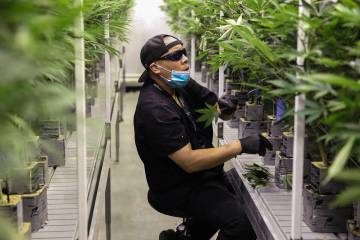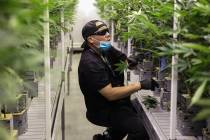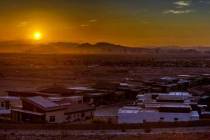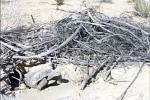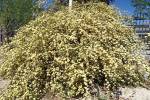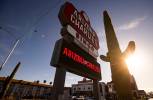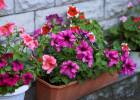No ‘superbloom’ repeat this year, Death Valley National Park officials say
Despite what you might have seen on the internet, Death Valley National Park is not in the midst of another wildflower “superbloom.”
Linda Slater, the park’s chief of interpretation, said she has been fielding calls from people taken in by online reports of another massive floral display in Death Valley, but it’s simply not happening this year.
“On the valley floor, I’ve seen four flowers along the side of the road. That’s it,” Slater said.
If you want to see the Mojave bloom in 2017, you’ll have to go farther south into California, to places such as Mojave National Preserve, Joshua Tree National Park and Anza-Borrego Desert State Park.
Jim Andre, who tracks desert flora as director of the Granite Mountains Desert Research Center in California, said this year’s wildflower crop should be “just fabulous” almost everywhere from Interstate 15 south to the Mexican border and east to the Colorado River.
The bloom is already underway at lower elevations, Andre said. It should start to peak by April 1 at the heart of Mojave National Preserve, 90 miles southwest of Las Vegas.
The show is especially good right now along the Colorado River south of Laughlin, particularly near Parker, Arizona.
“I’m seeing plants that you might only see once in a decade and only once,” Andre said. “Get into the mountains and canyons. It’s just outrageous.”
He also expects an impressive display early next month west of Death Valley National Park in California’s Owens Valley. And as the weather warms in mid-April, the bloom should spread north to Bishop and Mammoth along the eastern flank of the Sierra Nevada, Andre said.
Last spring, yellow flowers covered large swaths of Death Valley, triggering a record onslaught of visitors to the park 100 miles west of Las Vegas.
Slater said this year’s bloom is limited to few isolated parts of the park accessible only with high-clearance, 4-wheel-drive vehicles.
She expects a decent display of flowers in May or June, but only at higher elevations where there is mountain snow still waiting to melt.
“It’s always nice here in the spring whether there are flowers or not,” Slater said of Death Valley. “But if you’re looking for flowers, you should probably look somewhere else.”
Contact Henry Brean at hbrean@reviewjournal.com or 702-383-0350. Follow @RefriedBrean on Twitter.
Finding flowers
The bloom might be off in Death Valley National Park this year, but wildflowers should be plentiful at other desert destinations within about a five-hour drive of Las Vegas.
Here are a few recommendations from Jim Andre, director of the Granite Mountains Desert Research Center in California:
Peaking now: along the Colorado River from Needles, Calif., to Parker Dam.
Late March: Christmas Tree Pass northwest of Laughlin; the hills around Barstow, California, and Joshua Tree National Park below 3,000 feet.
Early April: Mojave National Preserve in California; the hills around Kingman, Arizona; and Joshua Tree between 3,000 and 5,000 feet.
Mid-April: Owens Valley, California, west of Death Valley National Park.
Late April and May: Higher elevations along the eastern Sierras near Bishop, California.







